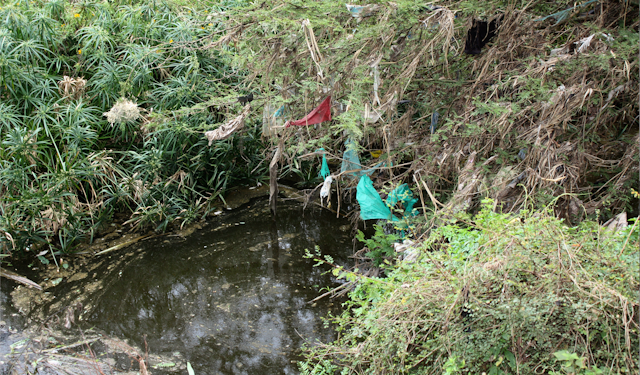Over the past 10 years, Ongata Rongai, a satellite town on the edge of Kenya’s capital, Nairobi, has experienced uncontrolled development and exponential population growth. Because of its appealing location close to the city, it’s jumped from just under 40,000 residents in 2009 to a population of over 172,000 in 2019. The most recent census data showed a high annual population growth rate of 16%.
The rapid increase in population, and accompanying development of residential buildings, has led to huge pressure on the environment, including its waterways.
There are two main rivers flowing through Ongata Rongai: the Mbagathi River and the Kandisi-Kiserian River. These rivers are important historically and, to an extent, today. People fish in them, use them to wash their clothes and collect water from them to use at home. Children and adults swim and bathe in them. Pastoralists water their livestock here and graze animals along the riverbanks. They were also the place where neighbouring clans would meet or where the Agikuyu community would come to pray at the towering mugumo (fig) trees. Indigenous plants growing on the riverbanks were harvested to make medicines.
I carried out a study which examined how Rongai’s growth has affected the riparian (river) environment and surrounding communities.
What I found was a severely degraded riparian environment and frustrated residents. Ongata Rongai is not special. It can be seen as a microcosm of a wider issue: that of rapid urban development at the expense of the environment.
Environments like this are common wherever urban populations are growing faster than resources and plans can keep up. The municipality has a responsibility to act on what’s known about the health of its land, people and animals.
Drivers of pollution
I carried out my study using archival materials, interviews and focus group discussions.
Ongata Rongai was, until fairly recently, a savannah with few or no permanent structures. It is now a densely populated urban area, no longer peripheral to but a part of the Nairobi metropolitan area.
This rapid development has happened without services keeping pace, including mains sewerage, solid waste disposal, piped safe water, or any sewage treatment plant. The main problem of the rivers today, cited by everyone I spoke to, was that of sewage. Untreated sewage is pumped into or flows into the rivers daily, primarily from low-cost and poorly constructed apartment buildings belonging to wealthy business people.
Another cause of degradation is people’s disconnection from the environment. Interviewees discussed how the proliferation of Christianity had a disconnecting effect, and traditional knowledge was forgotten. Few people retain knowledge about plants. And if the environment holds no meaning, people don’t see the consequences of throwing trash into the river.
Impacts of the pollution
The pollution makes the rivers almost unusable and hazardous. But there’s a lack of alternatives.
People use the river water for farming, laundry, bathing and other purposes, out of necessity or convenience. Climate change has reduced rainfall and created unpredictability, forcing livestock herders to depend on the polluted rivers – which are sometimes just trickles.

The poor state of the rivers and their surrounding environment leads to health challenges for both people and animals. Livestock often refuse to drink the river water. Children playing and swimming in it get ill and crops wither and die.
People are very aware of water safety and are wary of using river water. As one farmer in Rongai told me:
The problem with this river is, it is filthy. You see, if you use it to water your vegetables in your garden, even you are eating that filth. If you harvest these vegetables right now, you go and cook them, you are eating that filth. And it’s not even just us, it’s the animals too who have to drink that water. So those who are pouring the raw sewage into the river, can they just think about it and stop?
Another farmer told me:
These days if you wash in the river you find your skin dries up … as if you have an illness … and if you keep washing there, you’ll get typhoid.
What happens now?
There was extreme frustration with structural-level actors including local government and agencies. The residents I spoke to lamented corrupt government bodies and the lack of enforcement of existing environmental regulations. They felt hopeless as individuals without functioning institutions for environmental protection.
The situation is a typical example of how the health of people, animals and the environment is connected. Wildlife, livestock and a surge in human population have come together, putting pressure on a fragile ecosystem and environment. Without healthy rivers, there will be a dangerous knock-on effect on human and animal health.
The Rongai Rivers are one example of the rapid destruction of urban rivers globally. There’s been much talk of regenerating riparian and green spaces in Nairobi and in other African cities. But the time for talking is over. People and governments must act to save these vital spaces.

